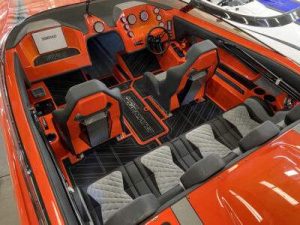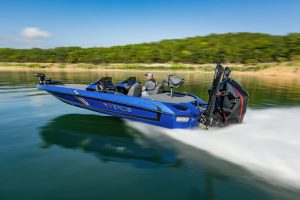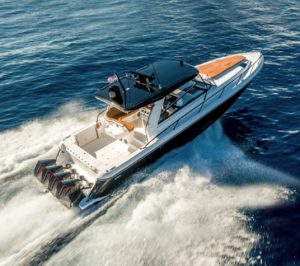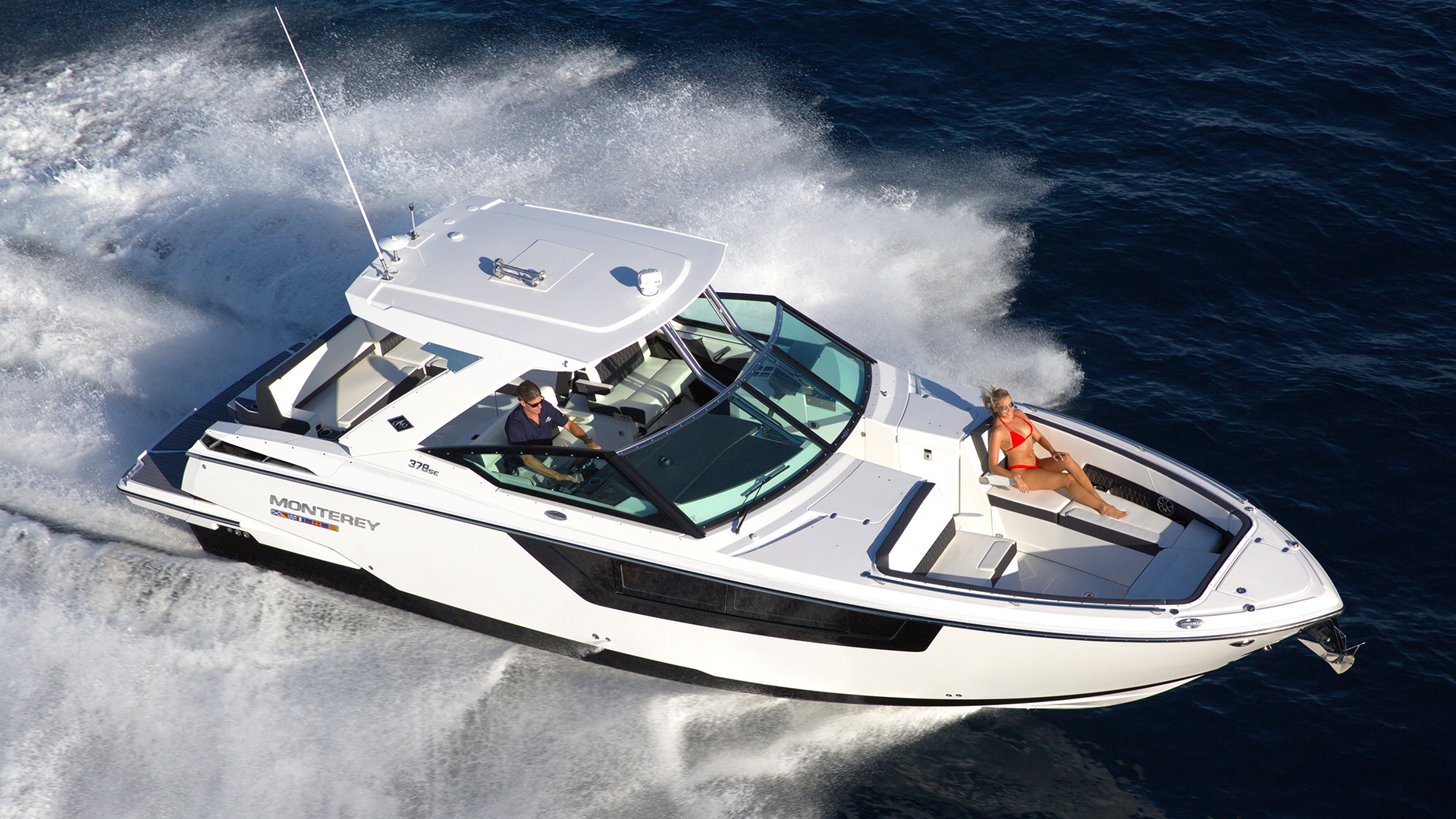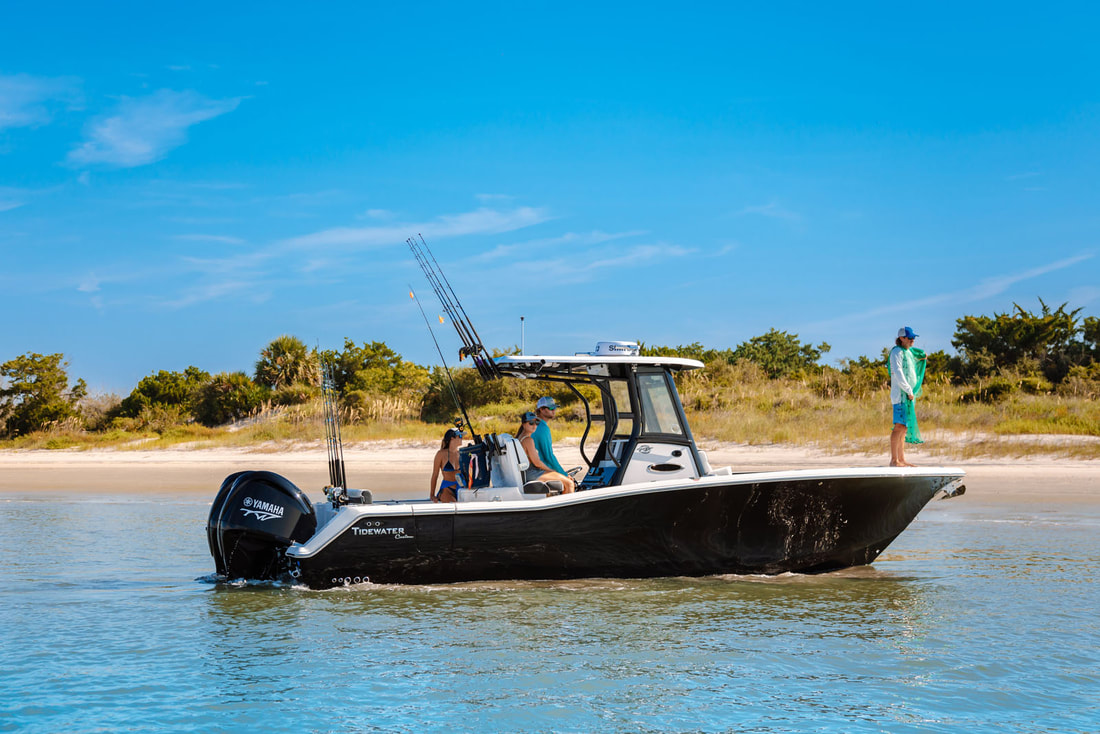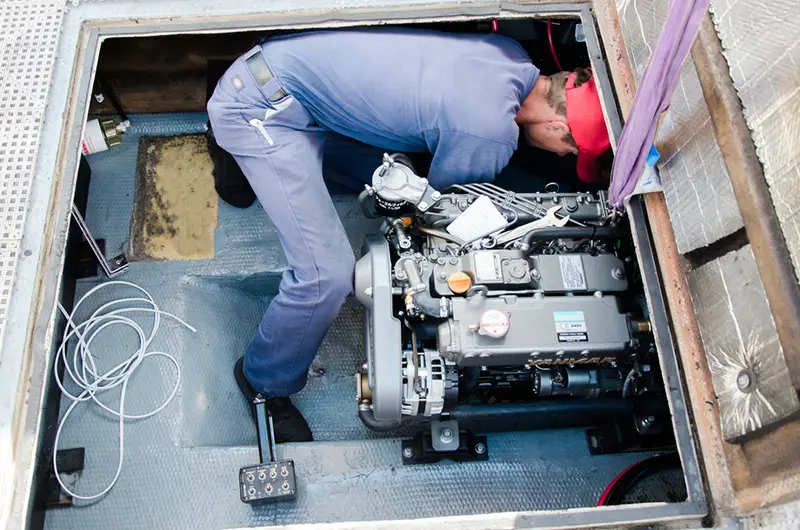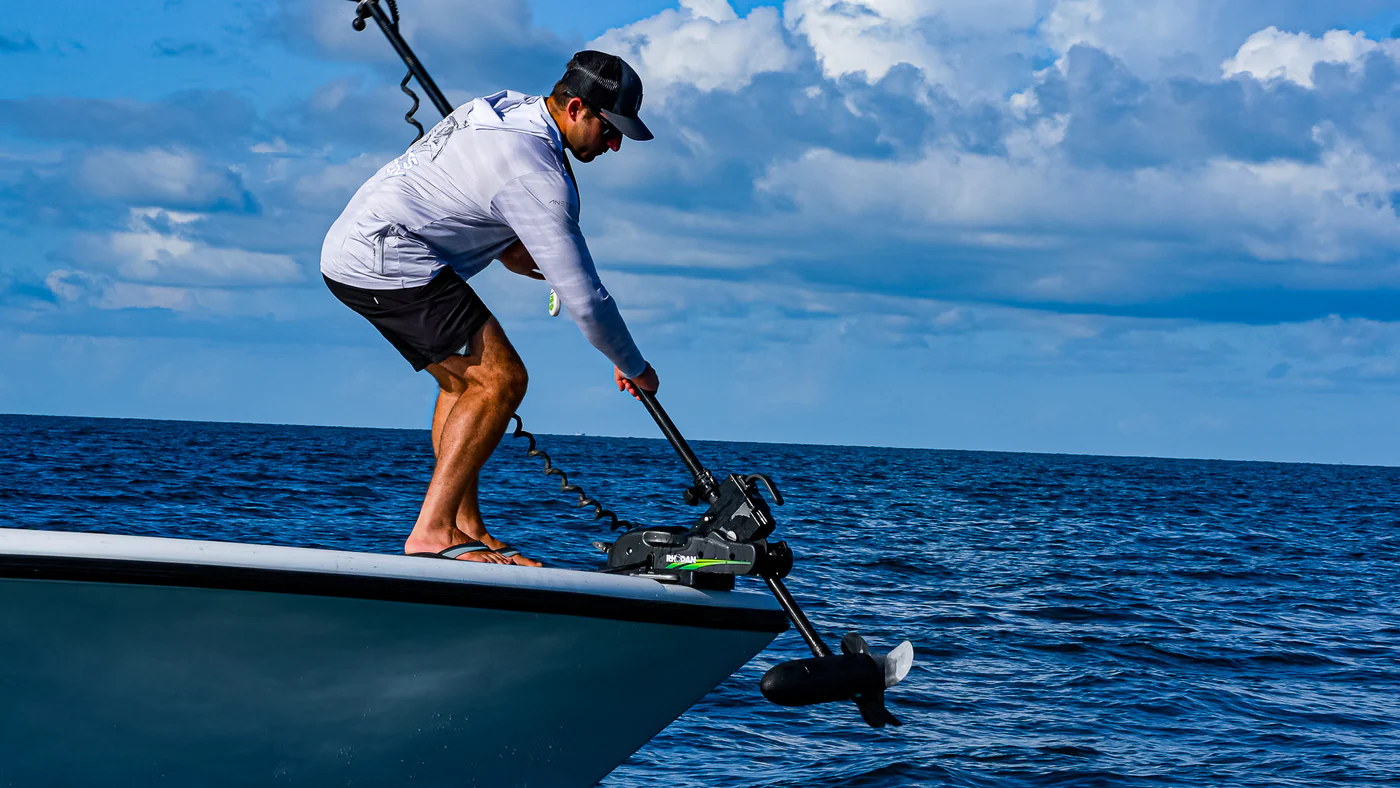
Dutch Barge
Dutch barges are a unique and charming class of watercraft with a rich history in the European maritime landscape, often recognized for their spacious interiors and traditional design. Initially used for cargo transport along the intricate web of rivers and canals in the Netherlands, these vessels have been adapted into luxurious homes and pleasure boats. The modern Dutch barge retains much of its historic charm while incorporating contemporary amenities and technology.
Models of Dutch barges vary from the classically styled to the modern luxury motor yachts with amenities akin to those found in high-end apartments. Specifications such as length, width, and draft play a crucial role in determining the barge's navigability and potential mooring locations. The price range can be wide, reflecting the diversity in size, features, and level of customization. Buyers interested in purchasing a Dutch barge are faced with a competitive market where several builders specialize in these types of vessels, each bringing their distinct craftsmanship and design philosophy.
Key Takeaways
- Dutch barges combine historical design with modern amenities, transitioning from cargo to leisure use.
- There is a wide array of Dutch barge models and specs catering to diverse needs and preferences.
- The market offers a broad price range and competition among specialized builders.
Overview of Dutch Barges
A Dutch barge is a broad term for a variety of flat-bottomed and shoal-draught vessels traditional to the Netherlands. Capable of navigating the shallow waters of its origins, these boats are now a popular choice for both leisure and residential purposes. They are characterized by their steel construction, which offers durability and longevity.
These boats come in several types, each with its own set of specifications catered to different needs. The designs have evolved from wooden hulls to primarily steel hulls, reflecting changes in building materials and techniques. The make and model of Dutch barges vary, with some common variants being the Luxemotor, Klipper, and Tjalk.
- Luxe motor – Often used for liveaboard, features a large cargo hold and living space.
- Klipper – Recognizable by its curved stem and originally a sail-powered cargo ship, now popular for conversion into a houseboat.
- Tjalk – Known for its wider beam, favorable for spacious interiors.
Modern Dutch barges often replicate the classic style, while incorporating contemporary features for comfort. They typically range in length from 15 to 30 meters, accommodating a variety of layouts and amenities. Prices can vary significantly, with new builds and bespoke designs commanding a premium.
Competitors in the market offer similar vessels, but Dutch barges maintain popularity due to their historic charm and adaptability. Buyers appreciate these boats for their unique blend of traditional appeal and modern performance on both inland waterways and coastal environments.
Models and Variations
Dutch Barges come in several distinctive models, each tailored for different needs and preferences. Among these, the Luxemotor class and Motor class are particularly noteworthy, often appealing to enthusiastic nautical homeowners and maritime collectors.
For example, the Piper 65L Luxemotor Class Dutch Barge offers an impressive 19.80-meter length with a steel hull, accommodating up to 2 guest cabins. This model is designed for comfortable cruising, suitable for navigating within 200 miles offshore as per its CE certification class (B). Notably, the Piper 65L model includes a draft of 1.50 meters, integrating both functionality and elegance.
In contrast, the Piper 60M Motor Class Dutch Barge is slightly shorter at 18.30 meters, featuring a draft of 1.30 meters. Despite its more compact size, it maintains the same level of quality with a steel hull, two cabins, and adherence to CE certification class (B). Its base price is set attractively for potential buyers.
For those looking for something more modest, the 49L Luxemotor Class Dutch Barge spans 14.95 meters with a similar build quality to its larger siblings. With these barges, customization and personal preference play a significant role, providing owners the opportunity to select fixtures and finishes to their liking.
Beyond standard models, enthusiast circles also appreciate vintage steamboats, which stand as a testament to nautical history and craftsmanship. These vessels are less about specs and more about the heritage they represent. Each Dutch Barge brings its own character to the waterways, whether it reflects modern luxury or echoes past traditions.
Specifications and Features
Dutch Barges are known for their robust construction and classic designs. They combine traditional aesthetics with modern amenities and are tailored for comfortable living on the water. With a focus on the specifics, the following subsections outline the key specifications and features of these vessels.
Hull and Construction
Dutch Barges typically feature a steel hull, providing a strong and durable build designed to withstand the rigors of river and canal cruising. The Piper 65L Luxemotor Class Dutch Barge, for instance, has an impressive overall length of 19.80 meters and draft of 1.50 meters. Its air draft is 3m, ensuring passage under most bridges. The hulls possess a CE certification Class B, signifying their ability to navigate waters no further than 200 miles offshore.
Engine and Performance
When it comes to engine and performance, these barges are often powered by reliable engines like Vetus or Beta Marine. The choice of engine impacts the barge's performance, with a focus on providing sufficient power while maintaining fuel efficiency. Many Dutch Barges are equipped with a shaft drive system, praised for its durability and low maintenance requirements.
Interior and Accommodations
The interior of a Dutch Barge offers a spacious and comfortable living environment. Many models, such as the Piper 60M Motor Class Dutch Barge, provide at least 2 guest cabins. The living spaces often feature a homely saloon, a well-equipped galley, and a wheelhouse that can sometimes double as additional living space. The thoughtful design aims to maximize both functionality and comfort within the interior spaces.
Additional Features
Dutch Barges boast a range of additional features that augment their practicality and livability. Solar panels can be a common sight, contributing to the vessel's energy independence. The 49L model highlights how additions like a raised aft-deck behind the wheelhouse enhance the aesthetic appeal while providing extra outdoor space for relaxation or entertaining.
The mentioned models and specifications represent a portion of what is available on the market, with certain Piper boats providing specific examples. Competitors may offer different dimensions and features, but Dutch Barges remain a celebrated choice for those seeking a balance of tradition and comfort on the water.
Pricing and Value
When considering the purchase of a Dutch Barge, potential buyers will find a diverse price range and should be aware of several key factors that influence cost, including VAT implications.
Price Range
Dutch Barges come with a wide spectrum of pricing. On the lower end, prices can start around $65,303, covering models that may be smaller or older. At the high end, they can reach up to $1,795,829 for the most luxurious, top-of-the-line models. A mid-range price can be represented by something like the Piper 60M Motor Class Dutch Barge, which has a base price of approximately £380.0 thousand for new models, with a length of 18.30 meters.
Factors Affecting Cost
Several factors contribute to the cost of a Dutch Barge:
- Year and Condition: Newer models command higher prices, while used barges' cost depends on their condition and year of manufacturing.
- Length and Specs: The size and specifications, such as the Piper 65L Luxemotor Class Dutch Barge, which has a length of 19.80 meters and includes two guest cabins, can navigate up to 200 miles offshore and has a draft of 1.50 meters, can significantly influence the price.
- Customization and Extras: Custom features, additional equipment, and other extras will add to the base price.
Understanding VAT
- VAT Rules: The value-added tax (VAT) applicable to a Dutch Barge depends on the country of purchase within the European Union.
- Impact on Price: Not included in the listed base price, VAT can substantially affect the overall cost. For example, the base price provided may be exclusive of VAT, which could add up to 20% or more to the final purchase price depending on the specific VAT rate in the country of sale.
Buying Guide
When considering the purchase of a Dutch barge, buyers should focus on where to find the right vessel and how to evaluate its condition. Specifically, they should pay attention to the year of manufacture and the current state of the barge, and they may consider obtaining a free valuation for a clear financial perspective.
Where to Buy
Prospective buyers should explore listings on specialized boating platforms and contact sellers or brokers who have experience with Dutch barges. It is important to understand the market and the availability of similar boats to make an informed decision. Examining various listings will provide a comprehensive view of the price range and features available.
- Contact Sellers: Engage with multiple sellers to gather ample information.
- Explore Listings: Review detailed listings of Dutch barges, paying close attention to specifications and images.
- Seek Similar Boats: Comparing similar boats can help in understanding the prevailing market conditions and standards.
Evaluating Used Barges
When assessing used Dutch barges, buyers must scrutinize the vessel's condition and history. A thorough evaluation should include checking the hull integrity, engine performance, and interior fixtures. It's advisable to seek a free valuation from a reputable source to estimate the fair market value and to understand the investment required for any necessary refurbishments.
- Condition: Assess wear and tear, as well as the overall maintenance state.
- Year of Manufacture: Older vessels may require more maintenance, so the year can be a critical factor.
- Get a Free Valuation: Utilize services offering free valuations to gauge the barge's worth.
Buyers should also note down and compare the specifications of each barge they consider to ensure they select a vessel that meets their specific needs.
Competitive Comparison
In comparing the Dutch Barges, especially models from Piper Boats, their specs, price ranges, and market positioning carve out a unique standing among competitors. This section drills into the specifics of how these vessels match up against similar boats and their positioning in the market.
Comparison with Similar Boats
Piper Boats, known for their craftsmanship in making Dutch Barges, specifically the Piper 65L Luxemotor Class Dutch Barge, compete closely with other boats in terms of design, function, and price. The Piper 65L features a 19.80 meter steel hull, 2 guest cabins, and a draft of 1.50 meters. In comparison, other builders offer similar specs; however, Piper's CE certification class (B) suggests a durability suitable for voyages up to 200 miles offshore. Price-wise, similar boats, such as those from other reputable builders, can range significantly, but the Piper 65L starts at a base price of £550.0 thousand which is considered competitive for its class.
| Feature | Piper Boats 65L | Competitors |
|---|---|---|
| Length | 19.80 m | Comparable |
| Guest Cabins | 2 | 2-3 |
| Hull Material | Steel | Steel |
| CE Certification | Class B | Varies |
| Max Offshore Range | 200 miles | 100-200 miles |
| Base Price | £550K | £350K - £750K |
Market Positioning
Piper Boats has positioned the Luxemotor Class Dutch Barge as a premium offering among Dutch-style yachts. These barges hold their value well, particularly when looking at yachts sold within the category. When compared to the market spectrum which includes everything from traditional vintage steamboats to contemporary motor yachts, Piper's pricing and quality place them firmly in the higher-end segment. Other builders may cater to lower-budget markets or niche vintage enthusiasts, yet Piper has established itself as a go-to for those seeking a blend of classic design with modern luxury. This targeting is reflected in the transaction prices of yachts sold, where Piper Boats frequently uphold a competitive resale value.
Owner Experiences
When embarking on ownership of a Dutch Barge, individuals are often swayed by the unique cruising lifestyle these vessels offer and understand the importance of diligent maintenance and upkeep. The experiences shared by current owners through various builders' magazines and manufacturer data provide valuable insights into living aboard these distinctive boats.
Cruising Lifestyle
Owners of Dutch Barges often celebrate the cruising and living aspects associated with these vessels. With typically well-appointed guest cabins and a spacious wheelhouse, Dutch Barges are designed for comfortable living while navigating the waterways. Cruising on a Dutch Barge allows for a flexible and unhurried exploration of rivers and canals, often revealing picturesque landscapes and quaint villages accessible at a moment's notice. The lifestyle is one of tranquility and connection with the surrounding environment, transforming the barge into a home that journeys with you.
Maintenance and Upkeep
The maintenance of a Dutch Barge is paramount to ensure both safety and longevity. Owners must pay close attention to the vessel's steel hull integrity, and many seek guidance from the original builders or manufacturers to follow precise maintenance schedules. Regular tasks include:
- Hull Inspection: To detect any signs of wear or corrosion.
- Painting: To protect the hull from the elements.
- Engine Maintenance: For reliable operation during cruising.
These barges often require more upkeep than modern yachts due to their large exposed steel surfaces and traditional design elements. As part of maintenance, owners sometimes modernize interior spaces while preserving the barge's classic features, balancing historical charm with contemporary needs.
Manufacturers and Builders
Within the niche market of Dutch Barges, manufacturers and builders are central to delivering both bespoke and production-line models that command varying prices and specifications to meet the diverse needs of clients.
Piper Boats Profile
Piper Boats is a preeminent figure in the Dutch Barge building industry, revered for its bespoke Dutch-style barges. As a significant player, Piper sets itself apart with a focus on crafting vessels that evoke both luxury and practicality. Their 49M Motor Class Dutch Barge starts at a guide cost price of £335,000 and is just one of the various models offered by the builder. Delving into their range, one can find the 65L Luxemotor Class Dutch Barge, which is the epitome of their luxurious offerings, with prices beginning at £550,000.
- Company: Piper Boats
- Models: 49M Motor Class, 65L Luxemotor Class, and others
- Price Range: £325,000 - £550,000+
- Specialty: Bespoke Dutch Style Barges
Other Notable Builders
Beyond Piper Boats, the Dutch Barge market features a range of other builders known for quality and craftsmanship. These builders often receive recognition from reputable publications such as Builders Magazine. These companies may not always have the same high profile as Piper, but they deliver quality alternatives that cater to different segments of the market.
- Notable Competitors:
- Barge Master Yachts: Focused on mid-range models.
- Netherlands Shipyards: Known for historical accuracy.
- RiverCraft Boats: Offers diversity in design and function.
Each of these builders contributes to the vibrant landscape of Dutch Barge construction, proving that this market segment continues to be robust and dynamic.
Frequently Asked Questions
In this section, readers will find pertinent information on the diverse specifications, pricing, competitive landscape, and unique features of Dutch barges, as well as insights for purchasing used barges and understanding the differences between widebeam and traditional models.
What specifications should I consider when comparing models of Dutch barges?
When comparing different models of Dutch barges, potential buyers should review specifications such as length, width, draft, engine size, and living space. The size of the barge typically impacts its suitability for various waterways and influences its maneuverability.
How does the price range of Dutch barges vary and what factors affect it?
The price range of Dutch barges can vary considerably. Factors influencing the price include size, age, condition, and the level of customization. New luxury models can be significantly more expensive than standard ones or used Dutch barges.
Which companies are the main competitors in the Dutch barge market?
Key competitors in the Dutch barge market include well-known builders such as Piper Boats, which offers models like the Piper 65M Motor Class Dutch Barge, as well as bespoke builders like Bespoke Dutch Barges in Richmond.
Can you list the special features of a luxury Dutch barge?
Luxury Dutch barges may include special features such as high-end finishes, modern navigational equipment, customized interiors, and hybrid propulsion systems. They might also offer increased living space and amenities equivalent to those found in luxury apartments.
What are the key considerations when purchasing a used Dutch barge?
When purchasing a used Dutch barge, key considerations include the vessel's overall condition, maintenance history, any signs of overplating or structural modifications, and whether it meets safety and navigation standards. Buyers are advised to thoroughly inspect or even seek advice from the Barge Association for guidance.
How does a widebeam barge differ from a traditional Dutch barge in terms of specifications and use?
A widebeam barge differs from a traditional Dutch barge in terms of width and living space. Widebeams can be similar in length to Dutch barges but are generally wider, which provides more interior space but can make them less maneuverable, particularly for novice boaters. They are better suited for larger waterways.





